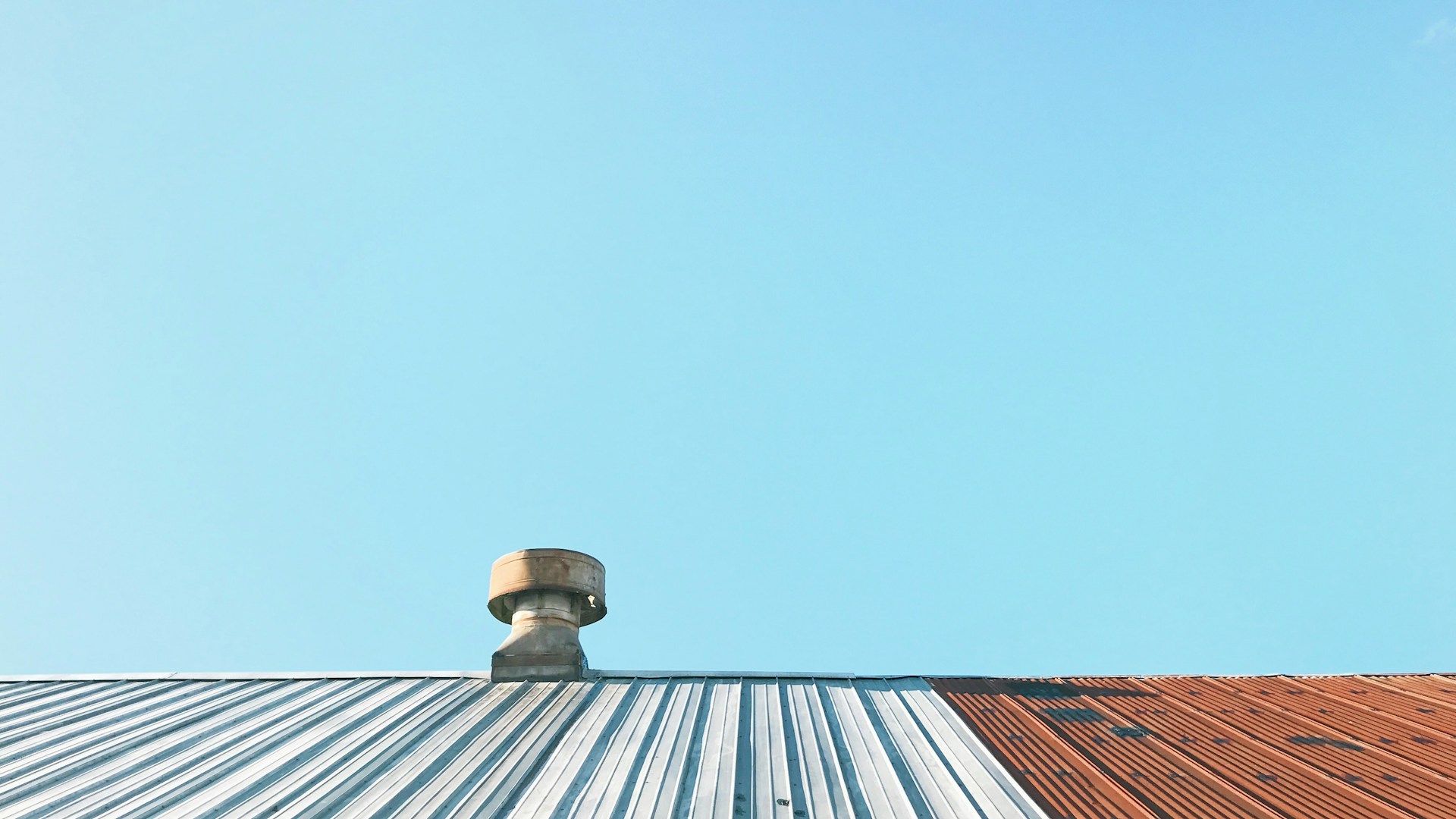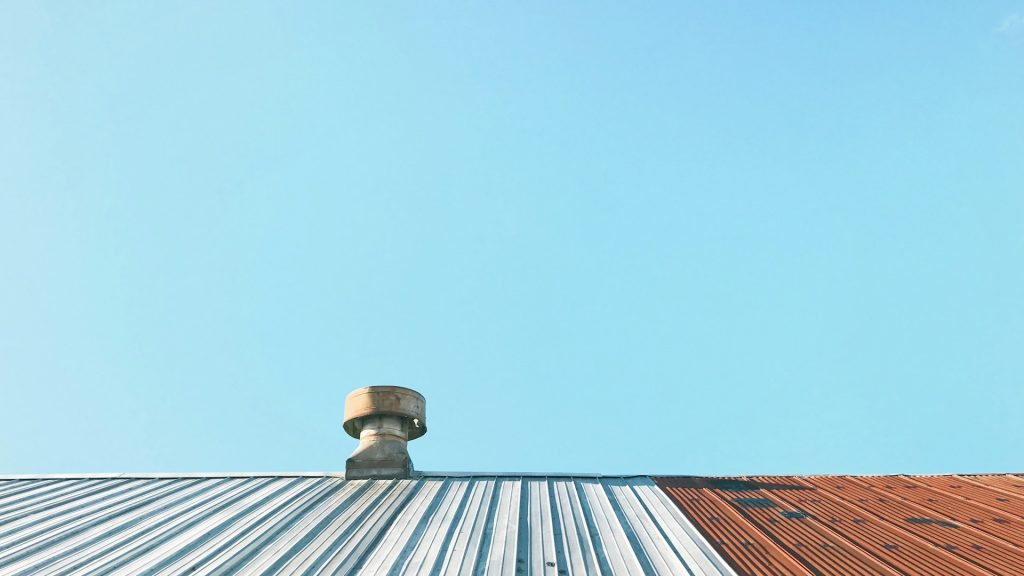
Boosting Energy Efficiency with Proper Gutter Installation on Industrial Roofs
April 18, 2025
In the realm of industrial building design and maintenance, energy efficiency is not just a buzzword—it’s a strategic priority. As operational costs rise and sustainability goals become more ambitious, industrial facility managers are under increasing pressure to optimize their buildings for maximum energy performance. While commonly discussed components such as insulation, HVAC systems, and LED lighting tend to dominate the conversation, one key feature often escapes notice: the gutter system.

Though its primary function is to manage rainwater, a properly installed gutter system can significantly influence a building’s overall energy efficiency. In industrial environments where roof areas are expansive and weather exposure is significant, gutter systems are not merely functional—they’re foundational. An effective gutter setup reduces moisture infiltration, preserves insulation integrity, and prevents structural damage, all of which contribute to improved energy performance.
This article explores the integral relationship between gutters and energy efficiency, with a focus on how ASG Industrial Seamless Gutters offers tailored solutions designed for industrial settings. From material considerations to climate responsiveness, we’ll explore how the right gutter system can be a silent champion of sustainable building practices.
The Interplay Between Gutters and Energy Efficiency
Moisture Management and Thermal Performance
Water is one of the most insidious threats to a building’s energy performance. When gutters are poorly designed, improperly installed, or neglected, rainwater can overflow or seep into the building envelope. Once moisture penetrates walls, roofs, or insulation layers, it drastically reduces their thermal resistance—commonly referred to as R-value.
Wet insulation becomes significantly less effective, allowing heat transfer to occur more readily. This loss of insulation efficacy forces heating and cooling systems to work harder to maintain temperature stability, driving up energy usage and, consequently, utility bills. Over time, this energy inefficiency not only impacts operational costs but can also strain HVAC systems, leading to increased maintenance or premature equipment failure.
Moreover, continuous moisture infiltration can create the ideal environment for mold and mildew growth, which may pose health risks and degrade indoor air quality—another indirect consequence of energy inefficiency. Thus, moisture management is not just a matter of preserving the building’s envelope; it is essential for optimizing energy use.
Preventing Structural Damage
Industrial buildings are typically large, complex structures with heavy operational demands. A failure in the drainage system can lead to water pooling around foundations, roof leaks, and even wall deterioration. These structural issues often necessitate energy-intensive repairs, including re-insulation, material replacement, and even temporary climate control to dry out affected areas.
Proper gutter installation plays a preventive role in these scenarios. By ensuring efficient and strategic water diversion, gutters protect not only the building’s physical structure but also its thermal envelope. In other words, when structural integrity is maintained, energy performance remains consistent.
Advantages of Seamless Gutters in Industrial Settings
Seamless gutters offer numerous benefits over traditional sectional systems, particularly for industrial applications where durability and efficiency are paramount. ASG Industrial Seamless Gutters specializes in delivering these advantages through customized fabrication and expert installation.
Leak Prevention
Traditional gutters are assembled from multiple segments, joined together at seams or joints. These junctions are weak points—prone to leaks over time, especially under pressure from heavy rain or snow loads. Seamless gutters, by contrast, are fabricated as single, continuous pieces designed to fit the building’s exact dimensions.
The result? Fewer joints, fewer leaks, and a significantly reduced risk of water damage. This not only ensures that rainwater is properly channeled away from the building but also helps maintain the integrity of the insulation and thermal barrier systems inside.
Custom Fit and Aesthetic Appeal
A one-size-fits-all approach simply doesn’t work for industrial facilities. Whether it’s a manufacturing plant, distribution center, or warehouse, each structure has unique dimensions and drainage requirements. Seamless gutters are custom-measured and fabricated on-site to ensure an exact fit, which maximizes efficiency.
This precision fit means that water flows are optimized, downspouts are strategically placed, and overflow risks are minimized. From an aesthetic standpoint, seamless gutters offer a clean, streamlined look that enhances the building’s exterior. While curb appeal might seem secondary in an industrial context, it can contribute to a company’s professional image, particularly for facilities that host clients or business partners.
Durability and Longevity
Durability is a non-negotiable in industrial settings, where weather exposure, mechanical wear, and physical impact are common. Seamless gutters, especially those made from heavy-duty materials like aluminum, galvanized steel, or copper, are designed to withstand harsh environmental conditions.
This durability translates into long-term cost savings—not only from fewer repairs but also from sustained energy efficiency. A gutter system that remains intact and functional over decades continues to protect insulation and structural components, ensuring that energy efficiency gains are preserved for the long haul.
Material Considerations for Energy-Efficient Gutters
Choosing the right material for an industrial gutter system can influence both performance and energy efficiency. Here are the top materials used in seamless gutter fabrication, each with unique benefits.
Aluminum
Aluminum gutters are lightweight, corrosion-resistant, and highly adaptable. Their reflective surface can contribute to lower heat absorption on the roof, which is particularly valuable in warmer months. This reflectivity aids in reducing the roof surface temperature, thereby decreasing the energy load on cooling systems inside the building.
Aluminum is also recyclable, aligning with green building practices and sustainability goals. For facilities looking to pursue LEED certification or other green building standards, aluminum gutters can be a strategic material choice.
Steel
Steel gutters—particularly galvanized or stainless steel—are known for their unmatched strength. They are ideal for regions with heavy rainfall, snow accumulation, or debris loads. Their rigidity ensures consistent performance, which is critical for industrial energy efficiency.
Because steel gutters are more resistant to impact and deformation, they maintain their drainage capacity over time. This longevity ensures that thermal insulation systems remain dry and effective, supporting long-term energy conservation.
Copper
Copper gutters, while a premium option, offer both durability and an upscale appearance. Their natural resistance to corrosion means they can last 50 years or more with minimal maintenance. Over time, copper develops a distinctive patina that adds to the building’s architectural appeal.
Though the upfront cost is higher, the long lifecycle and low maintenance demands of copper make it a smart investment for facilities seeking long-term energy efficiency and a strong return on investment.
Integrating Gutters with Energy-Efficient Roofing Systems
Gutters and roofing systems work in tandem to protect industrial buildings. When properly integrated, they can amplify each other’s energy-saving benefits.
Cool Roofs
Cool roofs are designed to reflect more sunlight and absorb less heat than standard roofs. These systems help reduce internal cooling loads, especially during hot summers. However, their performance can be compromised by water damage or mold growth due to poor drainage.
Gutters help preserve the reflective properties of cool roofs by efficiently channeling rainwater away from the surface. This prevents water pooling, material degradation, and microbial growth that can diminish the roof’s reflective capacity.
Green Roofs
Green roofs, or vegetative roofing systems, offer superior insulation and stormwater management benefits. However, they require precise water management to avoid saturation or runoff issues.
Seamless gutters play a vital role in managing excess water that green roofs may not retain. Proper drainage ensures that these roofs remain healthy and effective in reducing building heat gain and mitigating urban heat island effects—both of which have direct implications on energy efficiency.
Regional Considerations: New England’s Climate
ASG Industrial Seamless Gutters operates in Massachusetts and surrounding New England states, a region characterized by dramatic weather variability. From intense snowfalls and icy winters to heavy spring rains and humid summers, New England’s climate presents unique challenges for industrial buildings.
Handling Snow Loads and Ice Dams
Heavy snow accumulation on industrial roofs can lead to dangerous ice dams, which occur when melting snow refreezes at the roof edge, blocking gutters and forcing water back into the building. This can result in wet insulation, mold growth, and significant energy losses.
ASG’s seamless gutter systems are designed to withstand these conditions. Paired with proper insulation and ice melt technologies, they help prevent the formation of ice dams and ensure consistent drainage, thereby preserving the thermal envelope of the building.
Freeze-Thaw Durability
Frequent freeze-thaw cycles can cause expansion and contraction in gutter materials, leading to cracks and leaks. ASG uses materials and fastening techniques that account for these thermal movements, ensuring long-lasting performance.
By anticipating and designing for local climate conditions, ASG’s gutter systems not only protect buildings but also enhance their energy efficiency throughout the year.
Maintenance: Sustaining Energy Efficiency Over Time
Even the most advanced gutter system will underperform if not properly maintained. Over time, leaves, debris, and sediment can clog gutters and downspouts, causing water overflow and potential infiltration.
Routine Inspections
Regular inspections allow early detection of clogs, sagging sections, or signs of wear. Preventive maintenance ensures that water flows freely and that insulation and structural elements remain protected.
Professional Cleaning and Repairs
ASG offers comprehensive maintenance plans that include cleaning, joint resealing, slope adjustments, and minor repairs. These services help industrial facilities avoid energy loss due to preventable water damage and system failure.
Smart Gutter Accessories
Modern gutter systems can also be enhanced with accessories like leaf guards, snow guards, and heat cables. These features can reduce maintenance needs and improve year-round performance—further supporting energy efficiency goals.
Conclusion
Gutter systems may not be the first feature that comes to mind
when considering industrial energy efficiency, but their impact is far from negligible. From managing moisture and protecting insulation to preventing costly structural damage, a well-designed and properly installed gutter system is a cornerstone of sustainable building performance.
ASG Industrial Seamless Gutters brings deep expertise, region-specific solutions, and high-performance materials to the table. Their custom seamless gutter installations not only extend the life of industrial buildings but also support long-term energy savings—benefiting both the bottom line and the environment.
For facility managers, architects, and contractors seeking to elevate the energy efficiency of industrial buildings, the message is clear: don’t overlook the gutters.
Contact Information:
📞 Phone: (800) 565-1053
🌐 Website: www.industrialguttersma.com
For a consultation or to request a custom quote, reach out today and discover how ASG can help make your facility more efficient, resilient, and future-ready.
